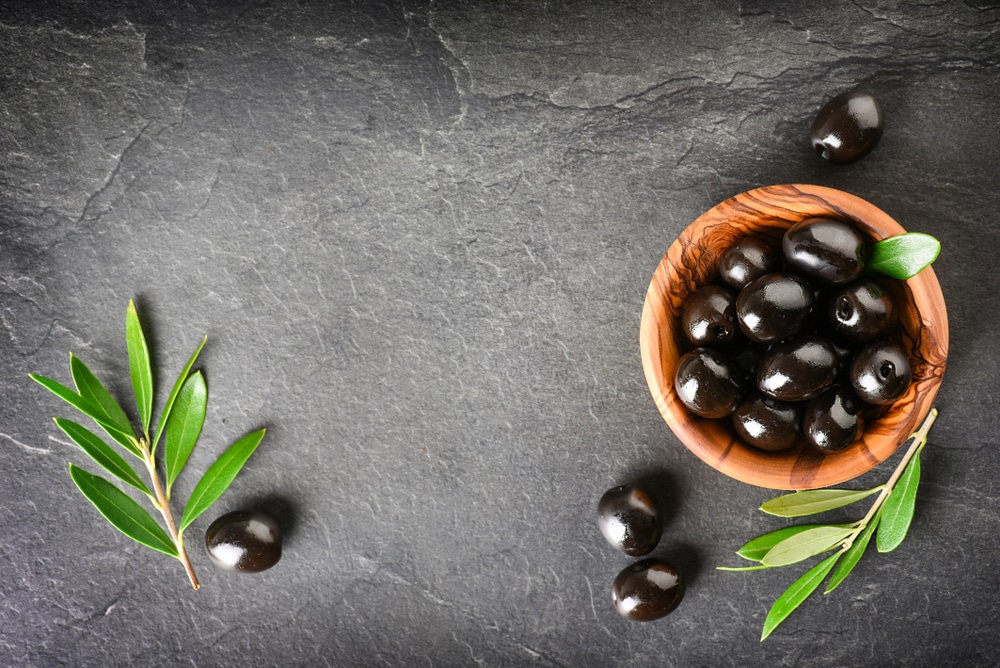
Black olives are undeniably the most popular and widely consumed olives. The black olives are a great addition to breakfast plates, or you can top them on your pizza. The olives are incredibly delicious and have various health benefits since it’s loaded with oleic acid, antioxidants, vitamin E, calcium, magnesium, and potassium.
However, proper storage of these olives is essential to make sure they are safe to consume. This is because some people have been asking, “what is the white stuff on black olives?” So, let’s check out the details!
What Is The White Stuff On Black Olives?
The Lifespan Of Black Olives
The black olives can be stored in the refrigerator for a long time, particularly when they are cured with brine or salt. If you haven’t opened the olive can, you can check the expiration date before consuming the olives (they are usually safe to consume even after a few months of expiration date has passed). So, if the black olives are cured in salty brine, they will be safe to consume for a year or two (this is for when the can is closed).
On the other hand, when you open the can of black olives, you need to finish them within a week, but it entirely depends on the curing process used by the brand. This is because some brands recommend that users consume olive within three days of opening the can, while some allow three months of refrigerated storage. To illustrate, the stronger and saltier brine promises a longer shelf life, but you’ve to keep the black olives submerged in the brine.
At this point, it’s common for people to think about the brine’s purpose. So, when these black olives are submerged in the brine, the lacto-fermentation process starts, which protects the olives against various bacteria (the ones that spoil the olives). Having said that, these bacteria cannot survive in salty brine, which is why it’s recommended to submerge the olives. On the other hand, if you don’t submerge the olives in the brine, they won’t last for more than five days.
What Is The White Stuff On Black Olives?
Coming back to the main topic, the white stuff isn’t a problem with black olives. Contrary to usual belief, you must not discard the black olives if you spot some white spots on the olives – they are harmless. In the majority of cases, the white spots are caused by the fermentation process, but they appear in the form of solid matter as well.
In either case, you can simply wash the olives and eat them however you like. On the other hand, if you are still uncertain, it’s better that you smell the olives and use them if they smell fine. However, if the white stuff on your black olives seems fuzzy or slimy, the black olives have gone bad, and you need to discard them right away. Lastly, if you see a thin layer of white stuff on top of the brine in the jar, just clear it to use the olive because the thin film doesn’t necessarily mean foul olives.
Signs Of Bad Black Olives
Now that you are clear that white stuff is harmless, it’s important that you understand the signs of foul black olives. Some of the signs of spoiled/foul black olives include;
- You need to check the olive jar’s lid, and if it’s become dome-shaped and round, there are high chances that the black olives are spoiled. This is because the round lid means improper sealing, which means the olives have been exposed to various elements and aren’t safe for your consumption
- Secondly, you need to smell the black olives. This is because the bad olives will produce a pungent and foul smell (it will be hard to ignore). So, if the olives have a foul smell, it’s best to discard the olives
- Lastly, you can always eat one olive to determine its taste. If the olives taste fine, you can consume them without worrying about your safety
The Bottom Line
On a concluding note, it’s quite easy to store the black olives because they don’t go bad that easily. The shelf life is pretty long when the can is unopened, and the temperature doesn’t exceed 75-degrees Fahrenheit. However, once you open the can, make sure that you refrigerate the can.